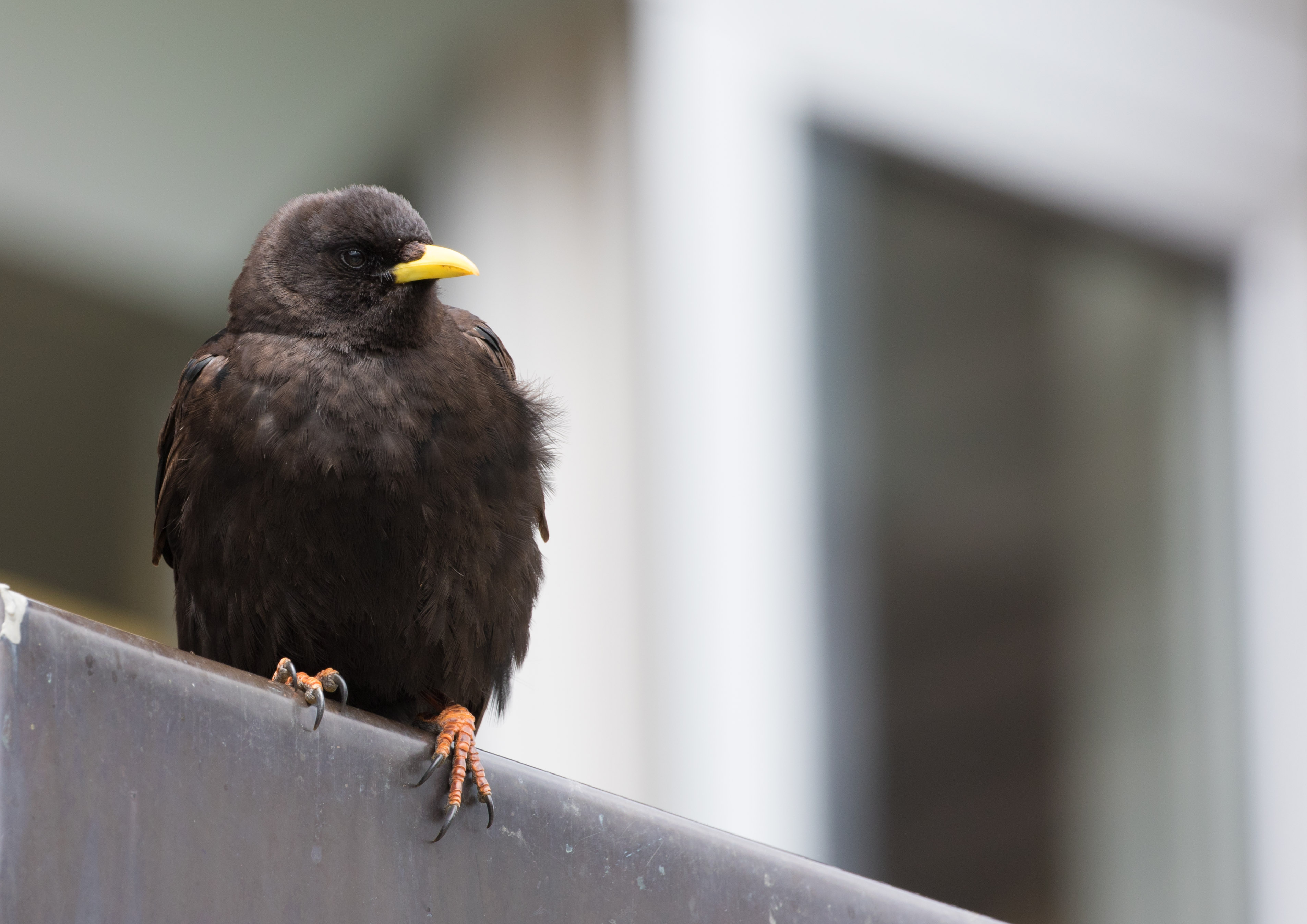I had arranged to get up early and get the first cable-car up to Männlichen. With time a precious commodity, I wanted to maximise some early morning birding on this 2300m high ridge. My day began, as every day did, with the steep walk up from our accommodation to Wengen and the cable-car station. Serins and Black Redstarts sang, Nutcrackers called and the sun shone. It looked like being a perfect morning to photograph some of the high altitude species and Snowfinch and Citril Finch were top of my list and at the forefront of my mind. What could possibly go wrong? Then the idyllic walk up to Wengen came to a brutal halt. I am familiar with the sound of expensive camera equipment hitting tarmac. At Niagara Falls in Canada, a camera body I had placed on luggage at the back of the boot, was propelled forward when I closed one of the rear doors of the car. It continued it’s journey over the lip of the boot, fell for nearly a meter before hitting the tarmac of the car-park. The sound is a unique combination of metal and glass crashing, as brief as it is violent. That traumatic memory came flooding back to me, as the horrendous crash of my 100-400mm telephoto lens smashing onto the road reached my ears. It had slipped from the side pocket of my backpack, where I had used two separate straps to to secure it. The same straps my wife had mentioned every day, as not looking totally secure. Instantly I knew there would no more big lens photography on the trip.
For a few moments I could not bring myself to examine the lens. I simply stood, looking down, feeling increasingly nauseous. When I could bring myself to kneel and pick up the lens, there was a moment of hope. The main objective lens was intact, could it somehow still work? I pulled out my camera body, removed the cracked hood from the lens and twisted the lens into place. It still fitted. I turned on the camera and peered through the viewfinder. I could see an out of focus image. I gently pressed the auto-focus button. There was a horrible grinding sound as the lens screamed in protest. It really was broken. I hunched over my crippled lens, feeling sick and helpless.
After a few minutes, having run through the options available to me, I packed the shattered lens into my backpack and decided to continue with my morning plans. I hoped that not having a big lens with me would guarantee that I would get point blank views of the key species, as life is often like that. And the sun was still shinning. The ascent in the cable car up from Wengen to Männlichen has stunning views that partially distracted me from my nausea:

Above, looking down: the view down onto Wengen from the Männlichen top-station. Lauterbrunnen can also be seen, nestling right down in the valley bottom, just behind Wengen.
Below, looking up: the view of the peaks from the Männlichen ridge. From left to right: The Eiger, Mönch and Jungfrau. The Silberhorn is the all white peak on the right flank of Jungfrau. Most of the snow visible on these peaks sits on glaciers.

Although quite touristy, I love it up here. The views are world-class, there was nobody about, the slopes were covered in flowers and the flowers were covered in bees and butterflies. Even the sound of smashing camera equipment was beginning to recede:

There were birds too. In fact the first passerine I saw was a Citril Finch flying past and then over the ridge, all green wing-bars and rump, with a nice grey head. It was quickly followed by two more and then a small flock of Linnets. I instinctively reached for my big lens, before sadly realising my mistake. Further along the ridge I heard a Snowfinch calling and located one perched on the wires of a nearby gondola. It was carrying food in it’s beak. I waited and watched and eventually the bird flew into a metal tube on the underside of a gondola pylon. A pair of Snowfinches was nesting inside the ski-lift pylons! With my large lens, I could have got some nice shots of Snowfinchs as they came and went with food. However, armed with only a 100mm macro lens, I did well to get any record shots at all. Below, an adult Snowfinch dropping out of the nest site:


The most abundant birds were Water Pipits. In two hours of trekking on the eastern flank of the Männlichen ridge I counted over 200, they were omnipresent. Alpine Chough were around the top-station and there was also the occasional Northern Wheatear, Black Redstart and fly-over Raven. Raptors were strangely absent. The butterflies were also great, though I am happy to be corrected if any are misidentified here. Below, Titania’s Fritillary, Chalkhill Blue, Swallowtail.



Very few places in the world are unspoilt and this includes the Männlichen ridge. Since my last visit here in 2008 this enormous wooden beast has appeared, a sort of Swiss Trojan cow. You really can climb inside and slide down the tongue, before emerging into a fabulous mountain vista.

My family came up to meet me at the children’s play area, which can lay claim to having one of the best see-saw panoramas on the planet. Snow-capped peaks and huge glaciers make up a majestic backdrop:

So ended a very pleasant morning, one with lots of exercise, fabulous scenery and a good views of a nice selection of Alpine passerines.
Next: Mürren, Schilthorn and Mr Bond.

Sickening! I can imagine the feeling. Covered by insurance I hope.
Does the ladder for the Trojan cow really lead you up through its arse?